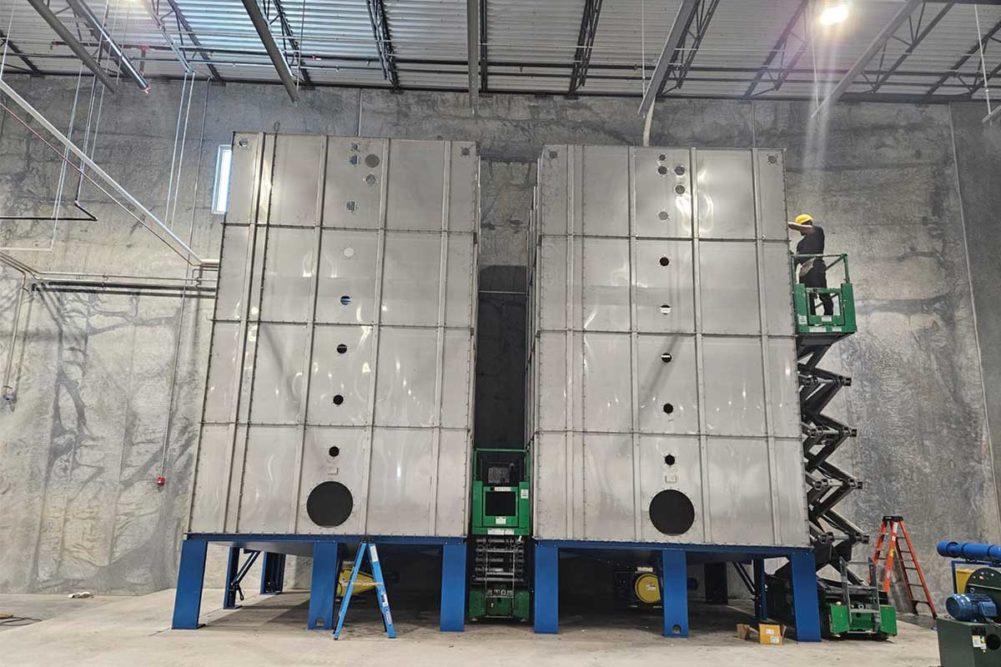Some bakeries go beyond National Fire Prevention Association (NFPA) and local regulatory requirements for insurance reasons, employee safety and peace of mind.
“Their own internal dust hazard analysis may show certain risks will require more protection, such as some additional explosion panels or flameless venting panels on systems where NFPA wouldn’t strictly require it,” said Pieter Van Hoecke, business development manager, North America, Spiromatic.
When it comes to safety, David Kennedy, business development manager, Vac-U-Max, said his leading advice is to “follow the rules” and comply with the regulations.
“The best technique to avoid explosion risks in the food industry is not a new technology. It’s to eliminate any sources of ignition as per NFPA standards,” he observed. “A common ignition source is uncontrolled static discharge from ungrounded/unbonded components and systems. Incorporating a ground monitoring circuit into controls will prevent powder handling equipment from operating if there are gaps in the grounding/bonding circuit.”
Additionally, filter media should be constructed of static-conductive material and be properly grounded.
“Uncontrolled static discharge is also a risk to employees,” Kennedy noted. “Besides being uncomfortable, some jolts can knock workers off their feet. Another source of ignition is metal impingement, such as a piece of metal contacting another ferrous surface that creates a spark, which can be avoided with stainless steel product contact parts in the vacuum conveying system and by employing inline metal detectors.”
He also recommended good housekeeping to reduce dust buildup that can serve as fuel for deflagration. For example, industrial vacuum cleaners used to remove combustible dusts must be certified by third-party testing labs that are recognized by the Occupational Safety and Health Administration (OSHA).
“Communication with employees when combustible dust exists in their working space is also mandated by OSHA,” he said. “Plant managers must train their workers about proper handling of dust. Improved and updated NFPA standards for combustible dust handling, prevention and protection, and process hazards analysis are intended to reduce combustible dust incidents and the possibility of secondary or tertiary explosion.”
Everyday safety should be a mindset in every bakery.
“Plant and worker safety must start at the top of an organization,” Kennedy suggested. “It needs to saturate its culture.”
Overall, safety requires not only vigilance but also common sense. Sometimes a simple investment can prevent worker injury.
“Pfening designs silo access ladders to OSHA regulation standards and considers personnel safety for maintenance platforms and other access equipment,” said Ken Girts, director of sales and marketing, Fred D. Pfening Co.
Sanitary design has also become a part of safety protocol.
“We only use aluminum and stainless steel for food product contact areas,” said Tom Leach, national sales manager, pneumatic conveying systems, Camcorp, a member of the Scheuch Group. “In filter receivers, ledges are avoided to prevent material buildup. Welds are polished to guarantee that there are no crevices where product can accumulate and cause issues down the line.”
He added that sanitary design also can enhance product quality over time. Today’s newer systems also provide energy efficiency and can significantly reduce operational costs compared to an obsolete system.
“While compliance with regulations is a driving force, it should not be the only standard of measure when evaluating your current system,” Leach stated. “Bakers should be proactively assessing their existing systems’ weaknesses, prioritizing upgrades based on risk and considering integrating newer technologies to maintain compliance.”
Whether it’s maintaining food quality or ensuring employee protection, bakers know it doesn’t pay to gamble. Rather, a focus on safety is a safe bet that will pay dividends time and time again.
This article is an excerpt from the March 2024 issue of Baking & Snack. To read the entire feature on Ingredient Handling, click here.





